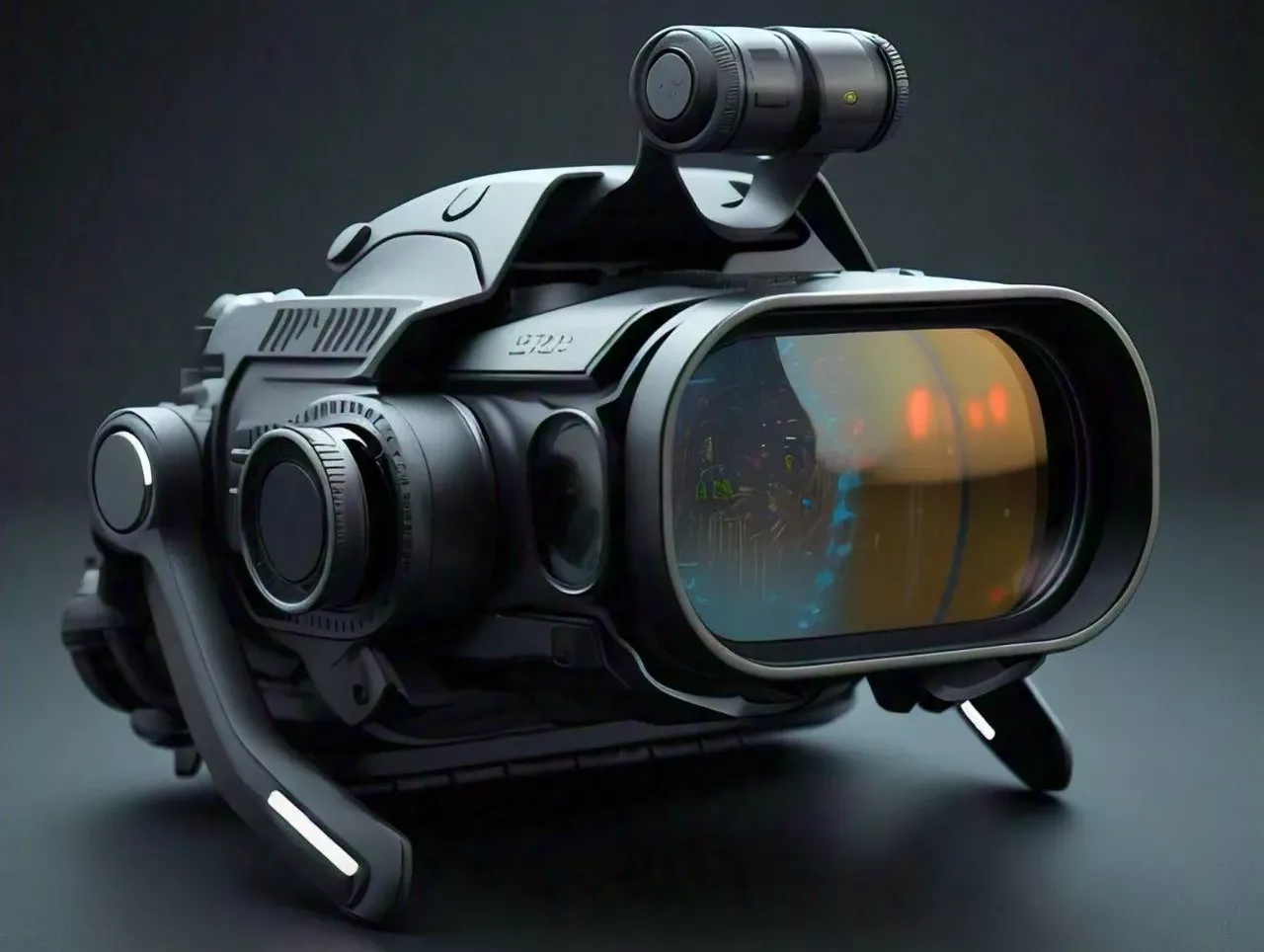Night vision technology has long been associated with bulky, heavy, and power-hungry devices that limit their practicality for prolonged use. However, recent advancements in organic light-emitting diodes (OLEDs) may soon change this landscape. A team of researchers at the University of Michigan has unveiled a revolutionary new OLED device, thinner than a strand of human hair, which has the potential to replace traditional night vision goggles with lightweight, more efficient glasses.
The Future of Night Vision: OLED Breakthrough
Traditional night vision goggles rely on image intensifiers, which convert incoming near-infrared (NIR) light into electrons. These electrons are accelerated through a vacuum and collide with a channel disc, amplifying the light by 10,000 times, allowing the wearer to see in near-total darkness. While effective, this process is power-intensive, cumbersome, and relies on bulky equipment.
In contrast, the OLED device developed at the University of Michigan works similarly in principle but with significant differences. It amplifies NIR light more than 100 times using a five-layer OLED stack, eliminating the need for high-voltage, vacuum-filled components. Instead of a complex, multi-step amplification process, the OLED device uses a single, thin film stack, less than a micron thick, to achieve light amplification.
Learn more about OLEDs from OLEDWorks, one of the collaborators in this groundbreaking research.
Lightweight Design with Significant Advantages
One of the standout features of this new OLED technology is its lightweight and compact design. At just under a micron thick—50 times thinner than a human hair—the device promises significant improvements in portability and ease of use. This makes the OLED device a practical alternative for soldiers, law enforcement personnel, and others who rely on night vision systems for extended periods.
Additionally, because the device operates at a much lower voltage, it consumes less power, extending battery life. This is a game-changer for military and field operations where long-term battery performance is critical.
Chris Giebink, a University of Michigan professor of electrical and computer engineering, highlighted the revolutionary design, stating, “One of the most attractive features of this new approach is that it amplifies light within a thin film stack… much thinner than a strand of hair.”
Positive Feedback Amplification: A Key Innovation
What makes this OLED technology especially groundbreaking is its innovative positive feedback loop. The device contains a photon-absorbing layer that converts infrared light into electrons. As these electrons pass through the OLED stack, they are converted into visible light photons. Some of these photons are emitted to the user’s eye, while others are reabsorbed, producing more electrons, thus creating a positive feedback loop that amplifies the output.
Previous OLED technologies could convert NIR light into visible light but lacked this amplification capability. According to Raju Lampande, a postdoctoral researcher at the University of Michigan and lead author of the study, “This marks the first demonstration of high photon gain in a thin film device.”
Memory Effect and Potential for Computer Vision
In addition to revolutionizing night vision systems, this OLED technology has potential applications in artificial intelligence (AI) and computer vision. The device exhibits a “memory” effect, known as hysteresis, meaning its light output is influenced by the intensity and duration of past inputs.
This ability to “remember” past inputs could make OLED technology a candidate for neuron-like connections in image processing systems, similar to how biological neurons process visual information. Such a system would be able to interpret and classify images without relying on an external computing unit, paving the way for smarter, more efficient AI systems.
Chris Giebink further explained, “Normally when you illuminate an upconversion OLED, it starts outputting light and when you turn off the illumination, it stops outputting light. This device can get stuck on and remember things over time, which is unusual.”
Scalable and Cost-Effective Manufacturing
A significant advantage of this new OLED technology is its potential for scalability and cost-effectiveness. The researchers fabricated the device using “off-the-shelf” materials and techniques commonly used in OLED manufacturing. This makes it easier to produce at scale and reduces costs, increasing the likelihood of widespread adoption in both commercial and defense sectors.
The research was conducted in collaboration with OLEDWorks and RTX, a leading aerospace and defense contractor. With the technology already patent-pending, the pathway to commercialization seems promising.
Explore OLEDWorks’ OLED lighting products and learn more about RTX’s innovations in defense technology.
A Bright Future for OLED Night Vision Technology
As the OLED technology continues to advance, the possibilities for its applications in night vision, computer vision, and other fields seem limitless. The device’s low power consumption, lightweight design, and innovative memory effect open new doors for industries ranging from defense to artificial intelligence.
While challenges remain, particularly in refining the memory behavior for night vision applications, this OLED breakthrough promises to significantly improve how we see and process the world around us—especially in the dark.
By combining innovation with practicality, this revolutionary OLED device marks a significant leap forward in night vision technology, potentially transforming bulky goggles into sleek, efficient, and affordable glasses that can be worn comfortably for extended periods.
Learn More:
With continued research and development, OLED technology might soon become the new standard for night vision, making it more accessible for a wide range of applications.
For More Updates: Emerging Technologies


